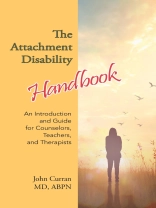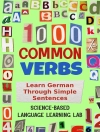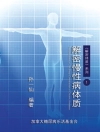Attachment Disability: Misunderstood, misdiagnosed, and mismanaged. Until now.
To be human is to cultivate attachments: to endeavor to form stable and trusting relationships. Attachment Disability results when stability and trust are broken as a result of separation, loss, abuse, or abandonment. People who undergo these traumas can react with lasting mistrust and paralyzing anxiety. But there is hope for sufferers from Attachment Disability: an approach based on understanding how the condition manifests in a person’s life and taking practical steps to manage those effects.
The Attachment Disability Handbook is a distillation of the principles introduced in Dr. John Curran’s more comprehensive Attachment Disability Volume 1. He designed this handbook specifically for people in the helping and healing professions who may not be aware of this form of disability and the crises it can engender, and who need the tools to address it. Here they will learn to identify the three forms of Attachment Disability-avoidance, entanglement, and acting-out-and discover the three steps to effective management of the condition: clarification, acceptance, and focusing on the modifications in thinking and behavior that work.
关于作者
Dr. Curran is a graduate of Saint Mary’s University of Minnesota and Columbia College of Physicians and Surgeons. He completed a medical surgical internship at Saint Luke’s Hospital in New York City and a psychiatric residency at the New York State Psychiatric Institute, also in New York. He is certified by the American Board of Psychiatry and Neurology. His book is based on fifty years’ experience providing consulting services at state and private mental hospitals, county and private mental health centers, nursing homes, and residential treatment centers for adolescent sexual offenders and adult alcoholics, as well as a few years of clinical research and forty-four years of private practice.












